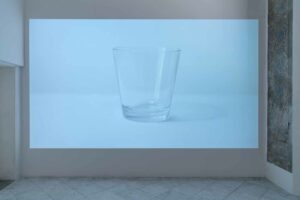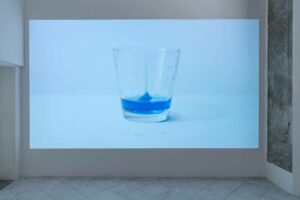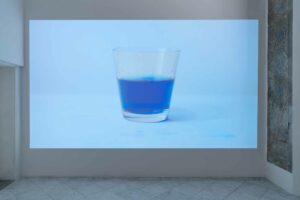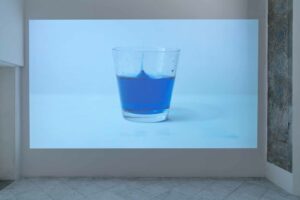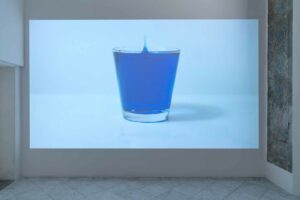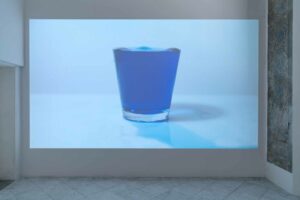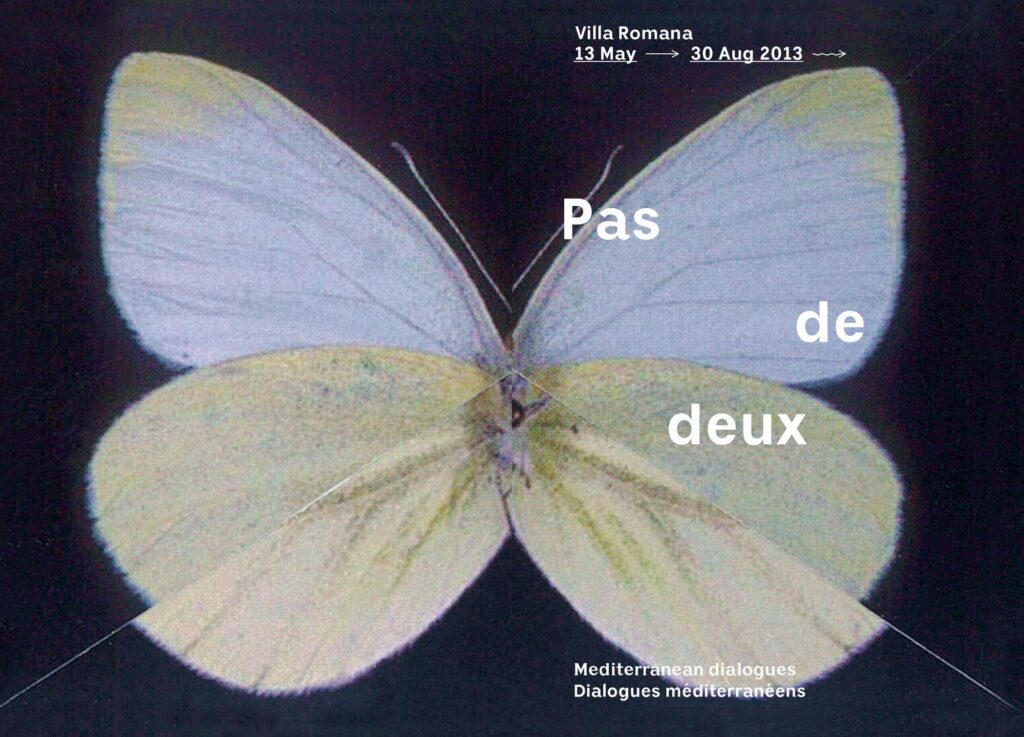Anna Raimondo, born in Naples in 1981, completed a master in Sound Arts at the London College of Communication (University of the Arts London) and is pursuing a doctorate between the School of Fine Arts in Brussels (ARBA) and ULAUniversity on the relationship between listening practices and feminist urban geography. Her artistic work uses voice and listening as platforms for meeting, collaboration and exchange. The material is formalized in actions, performances, photographs, videos and sound installations. She lives and works in Brussels. She has participated in Africa is No Island, a group show at the Museum MACAAL in Marrakech in 2018; Grand Tour d’Italie, a group show at MAMbo – Museo d’Arte Moderna, Bologna and Accademia di Belle Arti, L’Aquila in 2019; And Io dico Io at Galleria Nazionale, Rome, in 2021.
Together with artist Younes Baba-Ali she founded the radio and sound art platform Saout Radio, based in Morocco. As sound can easily travel across borders and does not need a visa, Saout Radio represents the space between the local and the international, the FM radio and the public soundscape, the virtual and the physical.
Nel Dubbio
Video
2016
“An endless doubt, a constant research is expressed through a hypnotic a-rhythmic gesture in the video. Its activation is also activated by the process of accumulation and by the naked neck portrayed in the diptych of pictures. The multitude of lucky charm symbols, from different cultural horizons, evokes the potential of multiculturalism inhabiting each subject, while proposing a contemporary mirror for the visitors in need of protection and inhabited by multiple cultures at the same time.” (A.R.)
Mediterraneo
Video, exhibition views
Exhibiton views, Schengen, 2018, Villa Romana, Florence; photo: OKNOstudio
2014
Minutes slowly roll by, falling drop-by-drop into an empty glass placed at the frame’s centre. The pace-setting artist’s voice, a woman’s voice, repeats “Mediterraneo, Mediterraneo, Mediterraneo, Mediterraneo, Mediterraneo, Mediterraneo…” for twenty minutes. An hypnotic image, magnified by the drop filling the glass and raising the liquid’s level. The initially crystal-clear, neat voice imperceptibly tires, breaks down, chokes, and finally drowns. The video itself starts by displaying quite distinct objects: the glass (the container), water (the contained), and the voice. In the process, the water level raises, the voice and the word crack, and the association between glass and mouth – the cavity through which the body swallows the life’s lymph – materializes.
[…] Sea, which swallows and ejects, thieves and returns. Physical erosion shapes the coasts it laps upon, a metaphor for the cultural, social and political impact on the people living along them. Far from being just an individual echo, the voice articulating “Mediterraneo” is a chorus generating space, rather than a source of narration, or a world’s description. It is an atavic space, resembling Edouard Glissant’s matrix-abyss: “The people having experienced the abyss do not boast of being elected. They do not think to generate the powerfulness of modernity. They live the relationship, they cultivate it, as the abyss’s oblivion takes root and the memory strengthens. […] It may be said that the abyss’s experience is what we share the most” (Édouard Glissant, Poetica della Relazione, 1990, in: Quodlibet, Macerata, 2007, p. 22). In the poetic of depth (op. cit., p. 34) at which this work aims, the explorations of the inner and the environmental spaces do tally with an extremely effective synthesis through which the submerged image of an archaic collective memory surfaces. Silvia Litardi
Listening to the Present
Time, Spaces and Speaking Voices
In: Pas de Deux: 5 x 2 x 2, Mediterranean dialogues. argobooks, 2014
2013
A dialogue between Younes Baba-All and Anna Raimondo, with the special participation of the reader.
Before getting started, we’d ask that you try to be aware of whether you can hear these voices in your mind, and how they sound. Imagine their accent, tone, timber, and rhythm. Construct acoustic spaces and sound environments for them. To help you do this, we’ve put together a list of the noises we could hear around us as we talked: a computer running, a computer shutting down, bird calls, a cat opening the door, a neon light humming, a car passing by in the distance, a car passing by closer up, voices, a hearty laugh, meowing, a rooster, footsteps on the stairs, books being leafed through, a coffee maker burbling, a female voice speaking French with a heavy Italian accent, a pen scratching, a male voice speaking French, rain, hail, coughing, music of various kinds, a cell phone ringing, water being poured into a glass, a cookie being munched, laughter, silence, pauses, music from a CD, a pen clicking, a dog barking….
PAS DE DEUX: 5 x 2 x 2 was a residency project encouraging Mediterranean dialogues between artists from the southern Mediterranean and curators from the northern and eastern sides of the Mediterranean Sea.
Participating artists and curators: Anna Raimondo (curator and artist, Italy), Younes Baba Ali (artist, Morocco), Basak Senova (curator, Turkey), Simohamed Fettaka (artist, Morocco), Yasmina Reggad (curator, France), Ismael Leamsi (artist, Tunisia), Charlotte Bank (art historian and curator, Germany/Switzerland), Younes Atbane (artist, Morocco), Nora Razian (curator, Lebanon), Atef Berredjem (artist, Algeria). They met for a two-week residency to create a dialogue about artistic approaches to the question: “Where are we now?”. That question – central to the Marrakech Biennale in 2014 – prompted collaborative reflections focusing on the artist’s creative process as well as on the curator’s more theoretical reading of it. The conversations and themes of the residency finally took material form in a book: each artist/curator pair produced an essay evoking the key themes addressed during the residency. The first book launch took place in Marrakech in February 2014, during the Marrakech Biennale.
